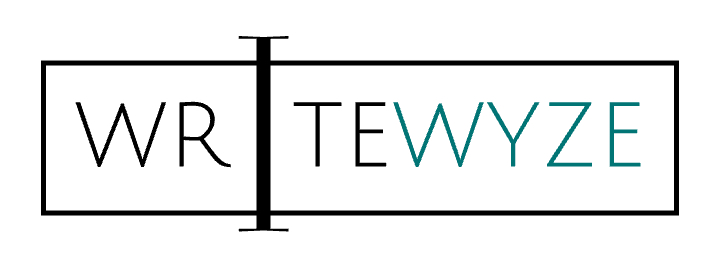
A founder-led brand doesn’t announce itself with fireworks. It shows up quietly, in short operational shifts and conversations that reveal real influence. For cloud-native founders, those moments are practical: a Slack channel quoting your framework, a candidate referencing a thread you wrote, or a buyer shortening the demo because they already trust your approach.
These “quiet signals” matter because they are hard to fake. Likes can be bought, impressions can be boosted, but the gestures that change hiring, sales, and product conversations are organic. If you want founder-led authority that translates to growth, start by spotting these signs, then build repeatable processes that protect and scale them.
People reference your thinking, not your logo
You know your voice is landing when others use your phrasing in meetings, Slack groups, or community forums. That happens when you’ve given the market a mental model; a way to frame a problem that others find useful. In cloud-native spaces, a portable metaphor or a short checklist often travels fastest: a one-line diagnosis for cluster sprawl, or a three-step rollback rule for risky deployments. When that language appears in decks or planning documents without your name attached, your ideas have moved from content to context.
What to do: Name the idea and own it. Create a short explainer (200–400 words) that defines the concept, shows one example, and lists two implications for teams. Store it in a canonical place so colleagues and partners can link to it.
Hiring conversations shift
Brand impact often shows first in recruitment. Engineers and operators join companies for ideas as much as compensation. When candidates say they applied because they read a post or listened to an episode, you’ve tapped into alignment and alignment is cheaper than interview loops.
How to act: Bake founder content into hiring. Make a founder-post required pre-read for technical screens, include a slide in hiring decks that outlines the founder’s technical thesis, and ask candidates how that perspective influenced their choice. Collect mentions in your applicant-tracking system; patterns show which pieces recruit which profiles.
Sales conversations compress
One of the most underrated payoffs of founder authority is shorter sales cycles. Prospects that open with “I follow your posts” arrive primed. They skip the basic qualification questions because the founder’s point of view already did the heavy lifting.
Tactical move: Build a one-page narrative brief for the sales team summarizing the founder’s top three arguments and the single best rebuttal to a common objection. When reps can point to “the founder’s thesis” in demos, credibility arrives faster and deals move forward more cleanly.
Internal language becomes public language
The best founder brands do double duty: they shape external perception and internal alignment. When product, marketing, and sales start using the founder’s phrases naturally, not from a memo but because they believe in them, you’ve created real narrative leverage.
Practical step: Run a monthly “language sync.” Pull five recent founder quotes or posts and ask product and sales leads which phrases customers are already echoing. Capture examples and standardize them in a short playbook that everyone references.
Audience growth without dilution
As visibility grows you’ll attract new audiences: enterprise buyers, partners, and peers. The real risk is softening the message to be “more palatable.” The brands that last keep conviction while widening reach. They widen the stage without blunting the voice.
Guardrails: Define three non-negotiables for voice (for example: prioritize technical nuance, avoid marketing platitudes, always include a practical takeaway). Use these as a quick filter for drafts and approvals. If a piece fails a non-negotiable, revise it.
Metrics that actually signal authority
Stop obsessing over vanity metrics. Track indicators that map to the signals above:
- Frequency of founder-phrase usage in internal docs and community Slack (sample weekly checks).
- Number of hires referencing founder content (capture this in the applicant tracker).
- Share of inbound leads that cite founder content as the first touch (record in CRM).
- Demo length and conversion rate for leads that mention founder content.
Capture and scale without burning the founder out
The trick is not volume; it’s capture. A repeatable process that takes 30–60 minutes of founder time per week produces steady output:
- Weekly 20-minute raw-capture: founder answers three prompts (what’s the friction this week, one contrarian take, one practical how-to).
- One editor/strategist turns the recording into a 700–1,000 word piece and three social snippets.
- The distribution calendar routes snippets to sales, hiring, and community touchpoints.
Tools that help include short-form audio notes, shared documents for live edits, and a CMS tag that marks “canonical ideas.” The operational goal: pull, don’t push. The founder fuels; the team runs.
Guardrails for scale
When you scale a voice, mistakes happen: tone drift, over-sanitization, content that reads like a press release. Two rules reduce risk:
- The founder signs off on high-impact pieces (op-eds, keynote essays, cornerstone essays).
- Routine content is checked against the three non-negotiables.
A public example to learn from: HashiCorp helped make “infrastructure as code” mainstream. That phrase became industry shorthand because founders and early teams used it repeatedly in talks, docs, and product messaging. The lesson: when a founder coins a useful idea and keeps reinforcing it, markets adopt the language and that language shapes product decisions, hiring, and buyer expectations.
Measure a small set of KPIs tied to the signals: candidate mentions, demo length, and referral volume. These markers show whether authority is translating into a pipeline.
From signals to systems: how Writewyze helps
Seeing a few of these signals means you’re at an inflection point. Turning quiet authority into predictable growth requires a repeatable structure: capture the founder’s thinking, codify it into reusable assets, and route those assets into hiring, sales, product, and community workflows.
Writewyze builds that structure. We don’t ghostwrite founders. We systematize them. Our SME-lite framework captures raw founder voice in short sessions, maps it into frameworks and narratives, and embeds those assets where they matter: sales briefs, hiring decks, community content, and cornerstone posts. The outcome is practical: less founder time, more strategic trust, and clearer alignment across teams.
If your founder’s voice is starting to land, it’s time to make it repeatable. If it hasn’t yet, we can help you start with the smallest useful unit: one named idea, one explainer, and one distribution path. Those three things compound faster than you think.
See how Writewyze helps founders turn quiet authority into growth.
